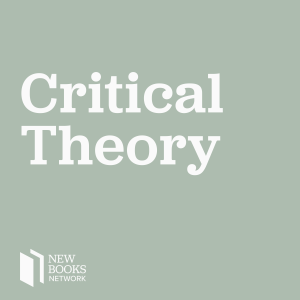
The Problem with Museums: A Conversation with Georgina Adam and Nizan Shaked
 2022-05-10
2022-05-10
Download
Right click and do "save link as"
In the past few years, museums of contemporary art have come under a fair deal of scrutiny. Pressures from groups such as Decoloinise This Space or the oxycontin scandal have forced changes to the governance of some of the world’s best-known institutions. At the same time, the work of journalists and museum scholars has revealed that the relationships between trustees, curators, collections, and the public are often far more complex than the narratives of public benefit and private value would have us believe.
Nizan Shaked’s Museums and Wealth: The Politics of Contemporary Art Collections (Bloomsbury, 2022) is a critical analysis of contemporary art collections and the value form. In the United States, institutions administered by the nonprofit system have an ambiguous status as they are neither entirely private nor fully public. Among nonprofits, the museum is unique as it is the only institution where trustees tend to collect the same objects they hold in ‘public trust’ on behalf of the nation. Shaked argues that the public serves as an alibi for establishing the symbolic value of art, which sustains its monetary value and its markets.
In The Rise and Rise of the Private Art Museum (Lund Humphries, 2022), Adam tracks the phenomenon of the collector’s museum in the 21st century. There are some 400 private art museums around the world, and an astonishing 70% of those devoted to contemporary art were founded in the past 20 years. Although private museums have been accused of being tax-evading vanity projects or ‘tombs for trophies’, the picture is complex and nuanced. Private museums can add greatly to the cultural life of a community, giving a platform to emerging artists, supplying educational programmes and revitalising declining or neglected regions. But their relationship with public institutions can also be problematic.
Are museums purely public affairs? How do private collections serve the greater good? What happens when these missions become confused? Georgina Adam and Nizan Shaked speak to Pierre d’Alancaisez about the 500-year history and the recent rise of the private art museum and consider if even public museums are, in the end, private.
Georgina Adam is a journalist specialising in the art market. She writes for the Financial Times and The Art Newspaper. She is the author of Big Bucks and The Dark Side of the Boom.
Nizan Shaked is a professor of Contemporary Art History, Museum and Curatorial Studies at California State University Long Beach. She is the author of The Synthetic Proposition: Conceptualism and the Political Referent in Contemporary Art.
Museum Susch
The Fisher collection at SF MoMA
Warren Kanders leaves the board of the Whitney
Learn more about your ad choices. Visit megaphone.fm/adchoices
Support our show by becoming a premium member! https://newbooksnetwork.supportingcast.fm/critical-theory
view more
More Episodes
012345678910111213141516171819
Create your
podcast in
minutes
- Full-featured podcast site
- Unlimited storage and bandwidth
- Comprehensive podcast stats
- Distribute to Apple Podcasts, Spotify, and more
- Make money with your podcast
It is Free
- Privacy Policy
- Cookie Policy
- Terms of Use
- Consent Preferences
- Copyright © 2015-2024 Podbean.com





